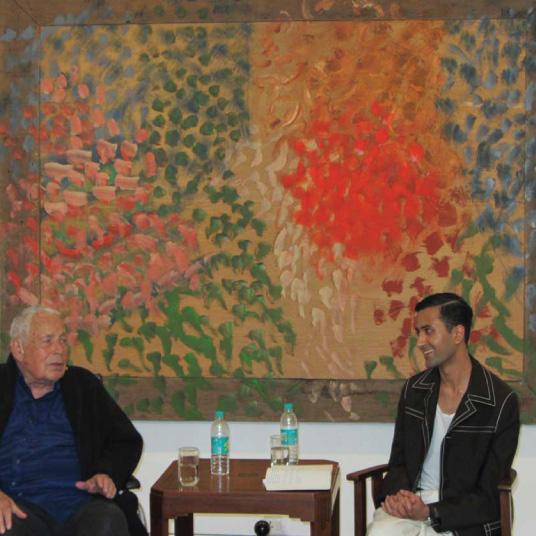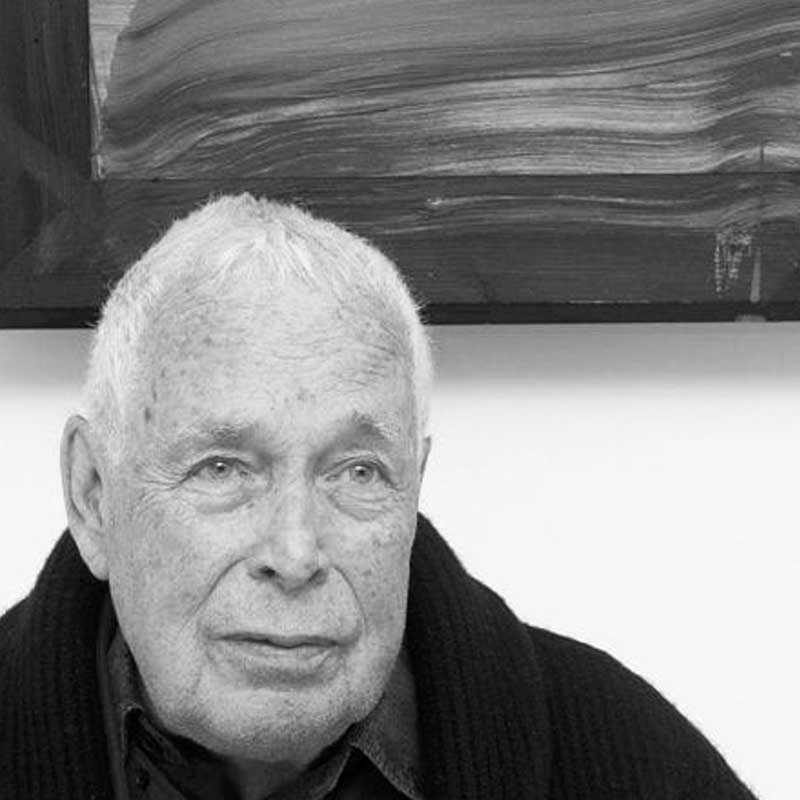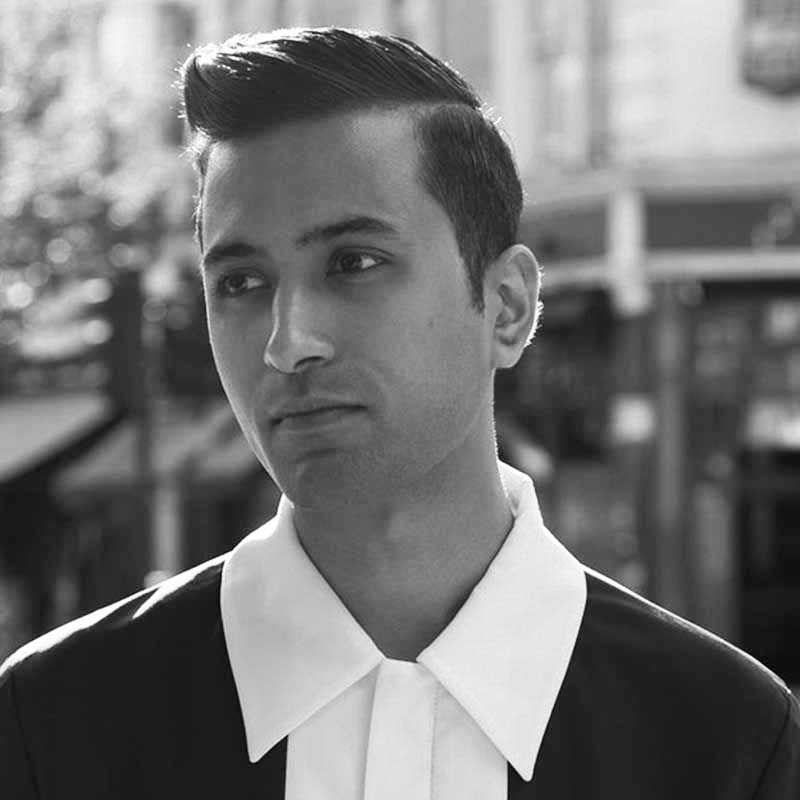
Curator and writer Shanay Jhaveri engaged with one of Britain’s most celebrated artists, Howard Hodgkin on his life, his work and his deep connection with India. Hodgkin first visited the country in 1964, and has since returned ‘as often as possible’, with India playing an important role in his work.

Howard Hodgkin was born in London in 1932. As a painter he belonged to no school or movement and is sometimes labelled an abstract artist. But he preferred to describe his work as ‘representational pictures of emotional situations’.
Hodgkin is widely regarded as one of Britain’s greatest artists and has been a central figure in contemporary art for over half a century. He was a great friend of India, first visiting the country in 1964. He returned ‘as often as possible’, with India playing an important role in his work. His first work on wood, rather than canvas, was Indian Subject (Blue and White), 1965-1969. In 1975 he represented Britain at the Delhi Triennale, and a few years later in 1982, Hodgkin curated Six Indian Painters at the Tate Gallery, featuring Rabindranath Tagore, Jamini Roy, Amrita Sher-Gil, K.G. Subramanyan, Bhupen Khakhar and the photographs of M.F. Husain. His prints on Indian themes include Indian Room (1967), Indian Views (1971), More Indian Views (1976), Indian Tree and Mango (1990-1991), In India and Delhi (2012).
He studied at the Camberwell School of Art, followed by the Bath Academy of Art between, where he later taught for many years. He served as an influential trustee of Tate and the National Gallery, London. In 1984, he represented Britain at the XLIVenice Biennale and he was awarded the Turner Prize in 1985. His first retrospective was curated by Nicholas Serota at the Museum of Modern Art, Oxford in 1976. His work has been the subject of numerous major retrospectives most notably at the Metropolitan Museum, New York, Tate Britain, London, The Irish Museum of Modern Art, Dublin and the Reina Sofia, Madrid. His paintings and prints are held by most major museums around the world. He designed the set and costumes for several opera and ballet productions including most recently Layla and Majnun performed by the Mark Morris Dance company in 2016. He was knighted in 1992, awarded the Shakespeare Prize in Hamburg in 1997, and made a Companion of Honour in 2002.
He passed away in March 2017 after his annual long stint in India.

Shanay Jhaveri is the editor of Outsider Films on India: 1950 – 1990 (The Shoestring Publisher, 2010) and Western Artists and India: Creative Inspirations in Art and Design (Thames and Hudson, 2013). He has curated film programmes at Tate Modern, Iniva, LUX/ICA Biennial of Moving Images, and the exhibition Companionable Silences at the Palais de Tokyo, Paris. He is a contributing editor to Frieze. He is a graduate from Brown University concentrating in Art-Semiotics and the History of Art and Architecture, and is currently a Phd. candidate at the Royal College of Art, London. At the Palais de Tokyo, Paris in 2013, he curated the show Companionable Silences – a presentation that revolves around one painting. In 2014, he curated In Dialogue and Amrita Sher-Gil and Lionel Weldt at Jhaveri Contemporary, Mumbai. He developed a film programme for Dhaka Art Summit in 2016. Currently, he is working as an assistant curator of South Asian Art at the Metropolitan Museum of Art in New York. He’s also written an accompanying essay to the Nasreen Mohamedi Retrospective, and is working on a new book, Chandigarh Is In India, that delves into the “artistic responses that Chandigarh has engendered since its inception.” He has most recently co-curated the Gedney In India show at the Jehangir Nicholson Gallery, CSMVS from March – June 2017.